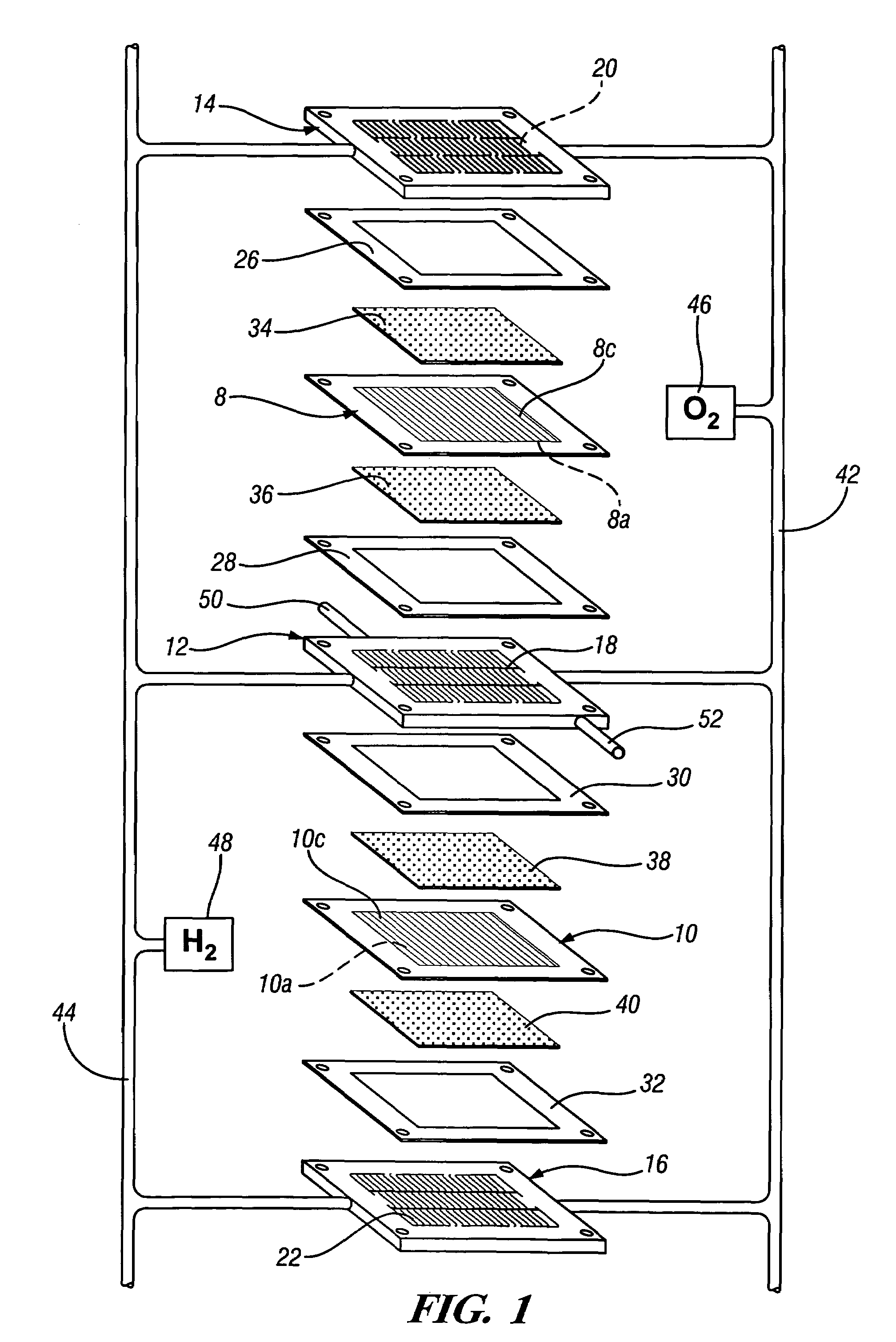Roll bonding of bipolar plates
a bipolar plate and roll bonding technology, applied in the direction of solventing apparatus, manufacturing tools, electrochemical generators, etc., can solve the problems of enlarge, thin sheets, complex and expensive manufacture of such bipolar plates, etc., and achieve the effect of increasing the bonding strength of the roll bonding interfa
- Summary
- Abstract
- Description
- Claims
- Application Information
AI Technical Summary
Benefits of technology
Problems solved by technology
Method used
Image
Examples
Embodiment Construction
[0020]FIG. 1 schematically depicts a representative partial fuel cell stack having a pair of membrane-electrode-assemblies (MEAs) 8 and 10 separated from each other by a non-porous, electrically-conductive bipolar plate 12. Each of the MEAs 8, 10 have a cathode face 8c, 10c and an anode face 8a, 10a. The MEAs 8 and 10, and bipolar plate 12, are stacked together between non-porous, electrically-conductive, liquid-cooled bipolar plates 14 and 16. The bipolar plates 12, 14 and 16 each include flow fields 18, 20 and 22 having a plurality of flow channels formed in the faces of the plates for distributing fuel and oxidant gases (e.g., H2 and O2) to the reactive faces of the MEAs 8 and 10. Nonconductive gaskets or seals 26, 28, 30 and 32 provide a seal and electrical insulation between the several plates of the fuel cell stack.
[0021]Porous, gas permeable, electrically conductive sheets 34, 36, 38 and 40 press up against the electrode faces of the MEAs 8 and 10 and serve as primary current...
PUM
| Property | Measurement | Unit |
|---|---|---|
| metallic | aaaaa | aaaaa |
| pressure | aaaaa | aaaaa |
| conductive | aaaaa | aaaaa |
Abstract
Description
Claims
Application Information
 Login to View More
Login to View More - R&D
- Intellectual Property
- Life Sciences
- Materials
- Tech Scout
- Unparalleled Data Quality
- Higher Quality Content
- 60% Fewer Hallucinations
Browse by: Latest US Patents, China's latest patents, Technical Efficacy Thesaurus, Application Domain, Technology Topic, Popular Technical Reports.
© 2025 PatSnap. All rights reserved.Legal|Privacy policy|Modern Slavery Act Transparency Statement|Sitemap|About US| Contact US: help@patsnap.com



